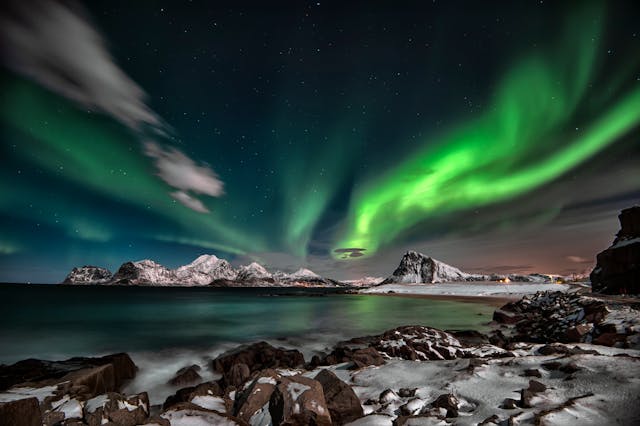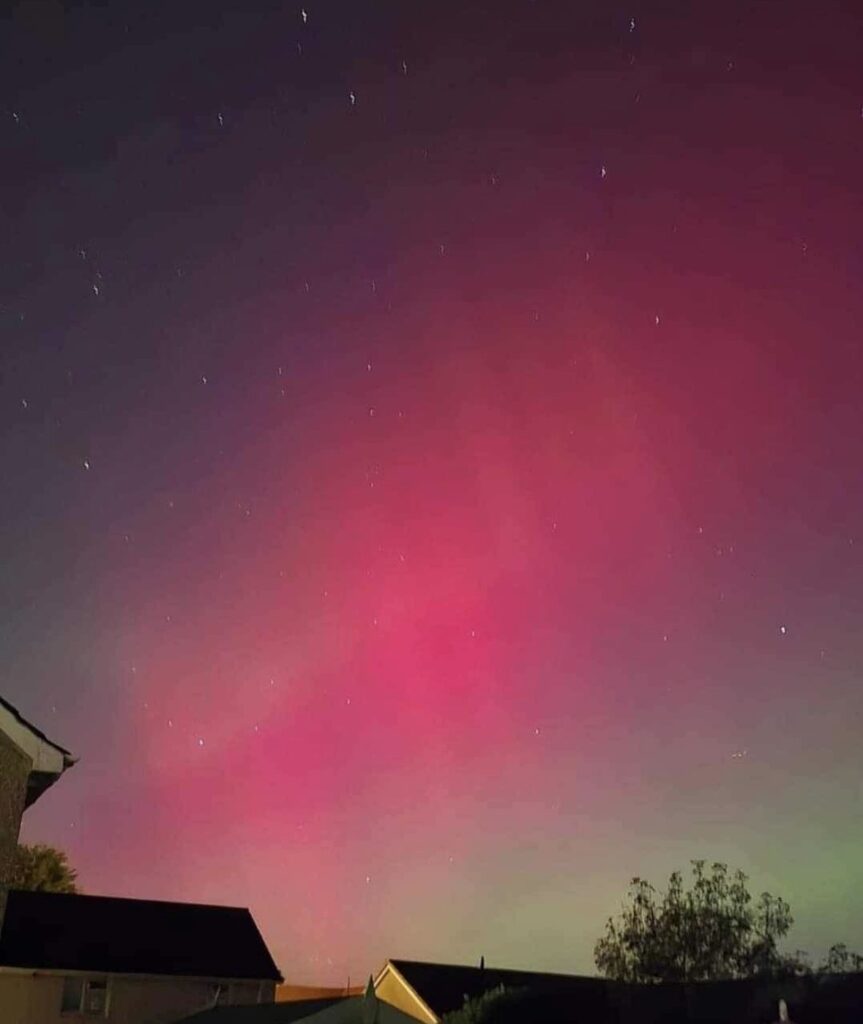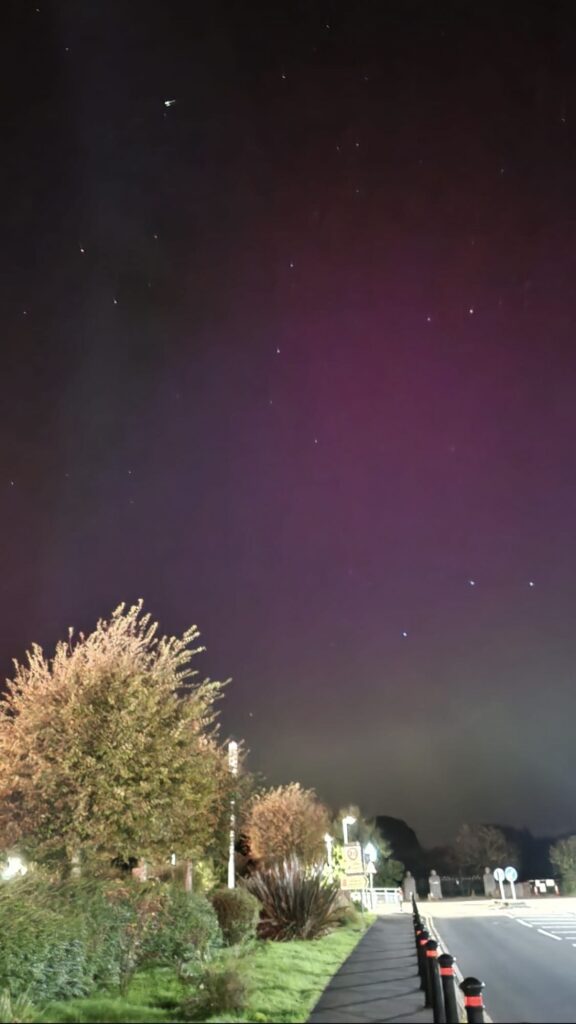Thank you Lauren Kisley and Jean Gillera for allowing Nomadify to use your beautiful photographs, appreciate.
If you’re in Swansea right now and you’ve noticed some vibrant lights dancing across the night sky, you’re not imagining it—you’re witnessing the awe-inspiring phenomenon known as the aurora borealis! Typically associated with the Arctic Circle, the northern lights have made a rare and spectacular appearance right here in South Wales, and it’s a sight you won’t want to miss.
What Causes the Aurora Borealis?
The aurora borealis, often called the northern lights, is caused by solar winds interacting with Earth’s magnetic field. When the sun releases charged particles, they travel through space and are drawn toward our planet’s poles by its magnetic field. Once these particles collide with gases in Earth’s atmosphere—mainly oxygen and nitrogen—energy is released in the form of light. This interaction creates those mesmerizing, glowing waves of green, pink, purple, and blue that we see in the sky.
The appearance of the northern lights so far south is unusual but not impossible. During periods of intense solar activity, or solar storms, more particles are pushed toward Earth, and the magnetic field can be disrupted. This allows the auroras to be visible in regions far outside their usual range, such as Swansea. Essentially, we’ve been gifted with a burst of solar energy, turning our sky into a rare light show!
Where Are They Commonly Seen?
The aurora borealis is most commonly spotted in high-latitude regions close to the Arctic, like Norway, Sweden, Finland, Iceland, Canada, and Alaska. These areas have the clearest views because of their proximity to the North Pole, where the Earth’s magnetic field is strongest. However, during strong solar activity, places further south, such as Scotland and even northern England, can occasionally witness this natural wonder.

History: First Sightings and Early Beliefs
People have been seeing the auroras for thousands of years, and early records date back to ancient civilizations. The first documented sightings are believed to have been by the Greeks as far back as 2600 BCE. Of course, they had no scientific understanding of what caused the lights, so many cultures interpreted them as mystical or supernatural events. Some Norse legends described the lights as reflections from the armor of the Valkyries, while the Inuit believed they were the spirits of animals playing in the sky.
The Stunning Colours of the Lights
One of the most enchanting aspects of the aurora borealis is the variety of colors it can display. Green is the most common color and is produced when oxygen molecules about 60 miles above the Earth collide with the sun’s charged particles. Higher up in the atmosphere, nitrogen produces vibrant blues and purples, while a rare red aurora is seen when oxygen interacts at even greater altitudes, around 200 miles up.

What’s the Weather Like During an Aurora?
Typically, auroras occur during clear, cold nights, but they’re actually more influenced by solar activity than by weather on Earth. That said, you’ll need a clear sky to see them at their best, so if the clouds stay away, Swansea residents are in for a breathtaking light show. The crisp autumn air we’re enjoying right now makes for ideal viewing conditions, especially if you venture out into the countryside, away from city lights.
Don’t Miss Out!
The northern lights in Swansea are a rare gift, something you may not have the chance to see again anytime soon. Grab a blanket, head outside, and take a moment to marvel at the science, history, and sheer beauty of this natural wonder. Whether you’re a stargazer or just someone looking to enjoy a once-in-a-lifetime experience, there’s no better time than now to appreciate the magic in the sky!

